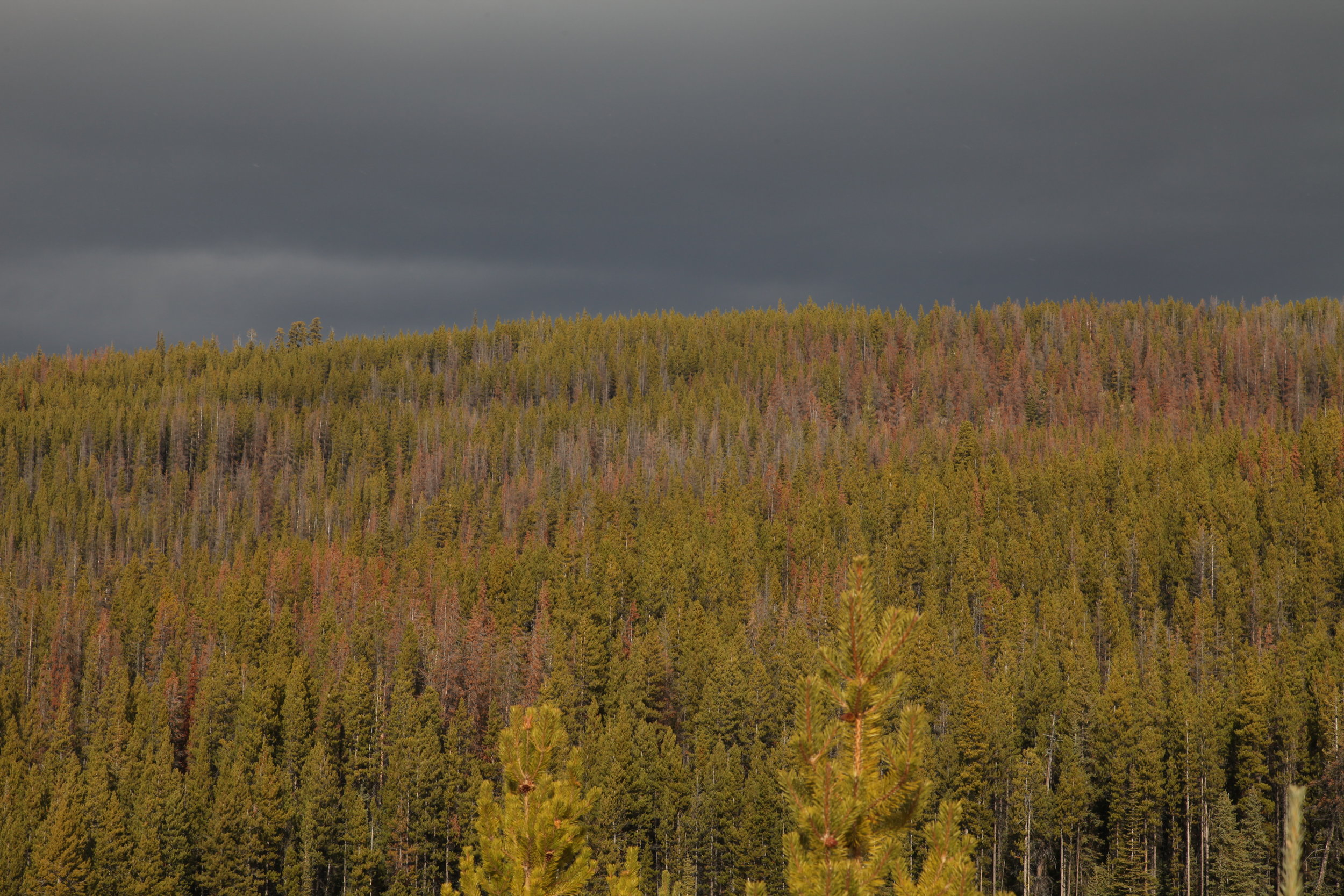Sallus Creek Headwaters Restoration
The headwaters of Sallus Creek and Tiffin Creek occur in an undulating high-elevation plateau in the north-east corner of the Xaxli’p Community Forest. This area has many streams and wetlands, making it a unique place in Xaxli’p territory. The forests near the streams and wetlands were originally made up of patches of old-growth sub-alpine fir, Engelmann spruce, and lodgepole pine, with openings of willow and other wetland shrubs. This moist area has historically been important habitat for moose that forage on the shrubs that grow in the wetlands and near the streams. In the 1990s, a non-Xaxli’p logging company clearcut large tracts of the forest. Trenches and mounds were dug into the soil, and pine and spruce trees were planted. The clearcutting changed the diverse spruce, fir and pine ecosystems into dense plantations. The open, shrubby wetlands and stream banks were replaced with thick young forests that decreased the value of the moose habitat.
We carried out two types of work in the clearcuts: eco-cultural restoration along a stream bank to improve moose habitat, and stand thinning in five one-hectare areas of land within the clearcut to observe tree growth and habitat improvements over time.
Eco-cultural Restoration Prescription
Two types of work were carried out at Sallus Creek. The first type of work was carried out on the banks of a small stream in the largest clearcut. The objective in this area is to restore diverse moose habitat. The restoration work encourages the growth of willow and other wetland shrubs that moose feed on. We thinned out the planted trees along the stream to create openings in the plantation. The naturally regenerated trees, especially spruce and fir, were retained, and most of the planted trees, especially the pine, were removed. Trees were left around the scattered stumps in order to maintain the natural structure of the forest. As a result, the dense plantation along the stream was restored into an open ecosystem of willow with scattered young spruce and fir trees.
The restoration prescription includes the following treatment specifications:
Remove trees around the willow bushes
Leave 3 to 4 trees around each stump, with a preference for leaving spruce and fir
Cut all planted pine
Leave the largest, healthiest natural regeneration, including pine, spruce, and fir
Lop and scatter the slash
The second type of work was carrying out stand thinning trials in five one-hectare areas within the plantations. The purpose of the stand thinning trials is to create three different thinning treatments in moist and dry ecosystem types and observe the effects of the thinning on the trees and the ecosystem over time. Each trial area was thinned to a density of 400, 600, or 800 stems per hectare. The restoration prescription includes the following treatment specifications:
Thin the trial area to the target density
Increase the diversity of conifer species
Leave the healthiest, largest trees
Leave more spruce trees in moist areas and more pine trees in dry areas
Maintain the natural stand structure by leaving trees near old stumps.



